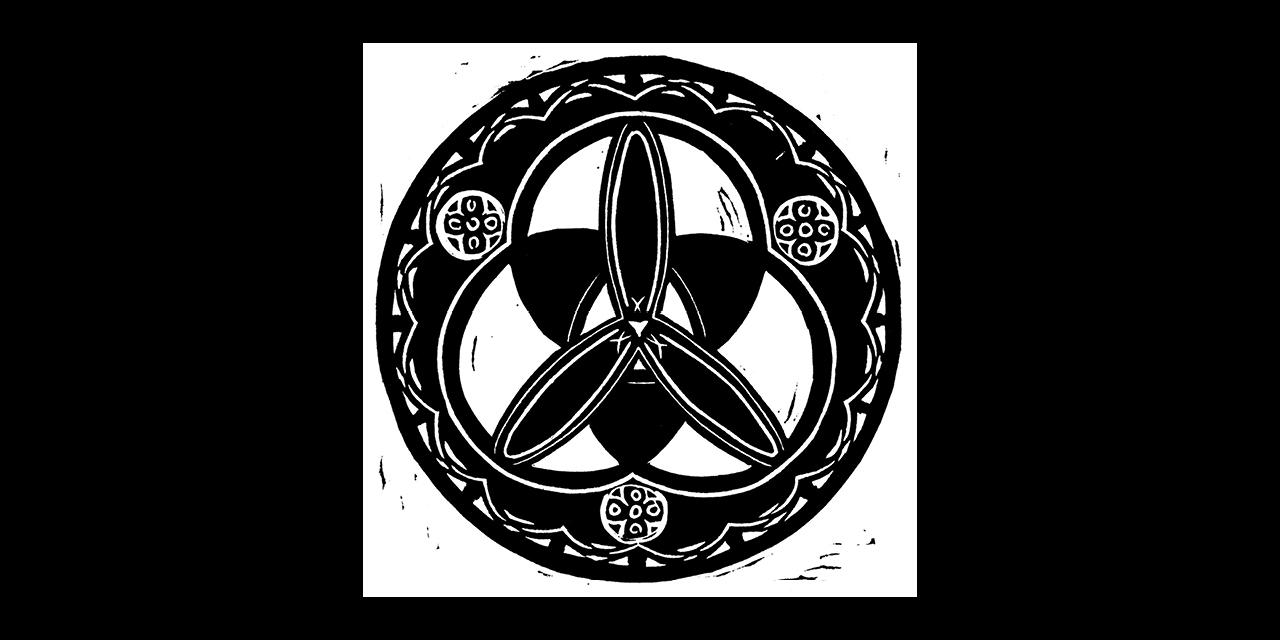Black and White .jpeg image for download.
Description of Trefoil and Triquetra
Any attempt to visually communicate the Trinity can only hint at the mystery of God, who is at once personal and interpersonal. This print touches on this idea of a God in community, one God in three persons, with a triquetra—an early trinitarian design used especially in Great Britain. Three arcs, formed from one circle, denote indivisibility and equality; the one continuous line that entwines represents eternity and relationality. Note the simple triangle formed in the very middle—probably the first trinitarian symbol. Surrounding the triquetra is a trefoil. It is composed of three joined circles forming a stylized leaf, again signifying one God in three persons.
Scripture References
- 2 Corinthians 13:13
- Ephesians 4:4-6
Occasions for Use
- Trinity Sunday
- Opening of Worship
- Closing of Worship
- Proclaiming the Word
- Providence
- Thanksgiving
- Baptism of our Lord
- Ascension
The image is an original linoleum block print resulting from a printmaking process in which an image is drawn on a block of wood covered with a thin layer of linoleum, and then hand-carved to expose areas that will be white. Ink is rolled onto the block, covering the surface not cut away. Paper made from the mulberry tree is laid on top and hand rubbed with a Japanese barren or wooden spoon. In transferring the ink to the paper the resulting image is a reflection of the design placed on the block. It first appeared in the book Visuals for Worship (Faith Alive Christian Resources, 2006) which is no longer in print.
When using the image please include the following acknowledgment: “Linoleum block print by Elizabeth Steele Halstead."

